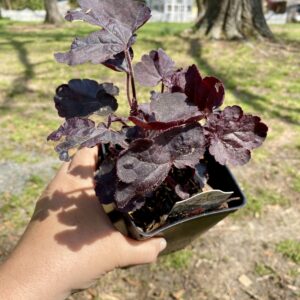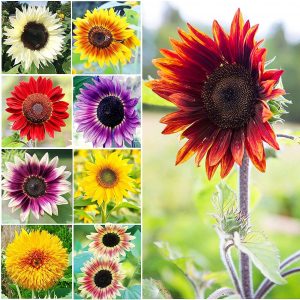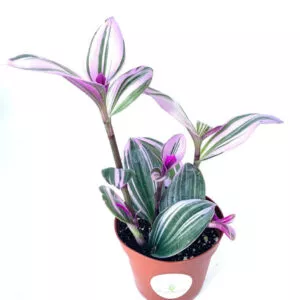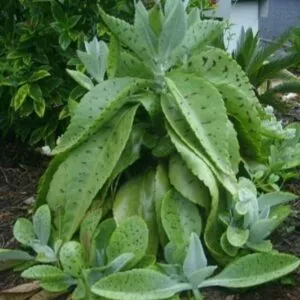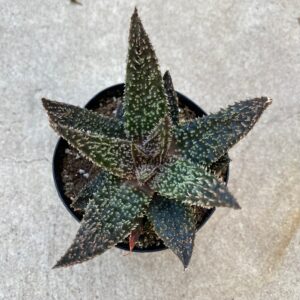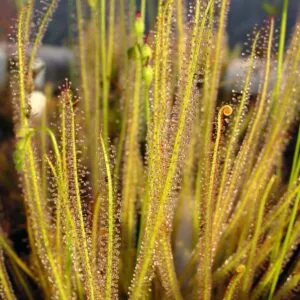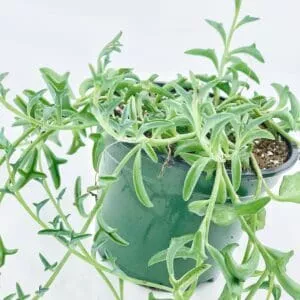No products in the cart.
Table of Contents
The rubber tree houseplant should be your choice if you like indoor plants that create an exotic, tropical vibe in the room.
Of course, you should also know more about rubber plant care.
Rubber Tree Care Guide Table
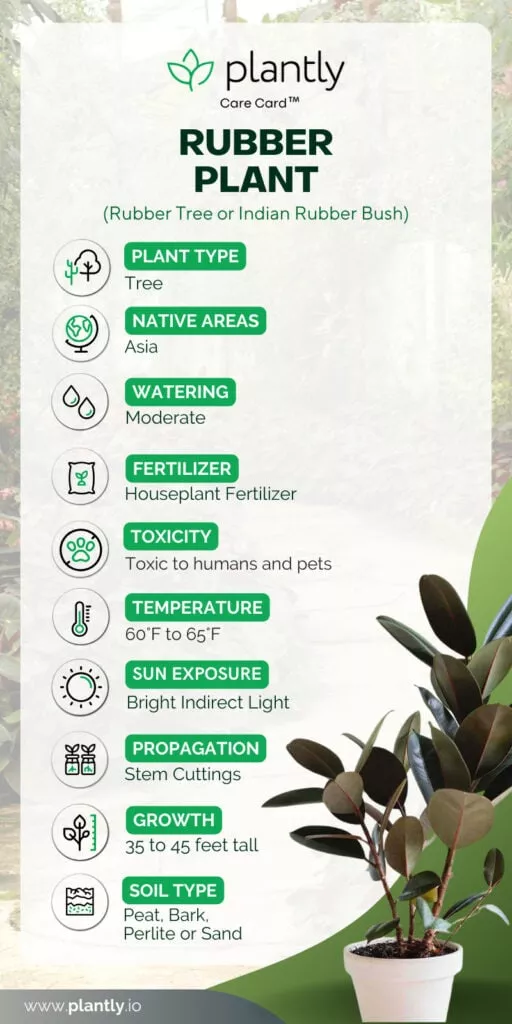
It is a tree with big, shiny leaves and beautiful, dense roots. Although it isn’t precisely a low-maintenance indoor plant, it won’t take you long to figure out the rubber plant’s basic needs. Besides, that is why I am here!
In this guide, I have summarized my knowledge about the rubber plant. I hope that I will make its cultivation easier for you. Let’s see what you should do to let the rubber tree thrive!
About Rubber Plant
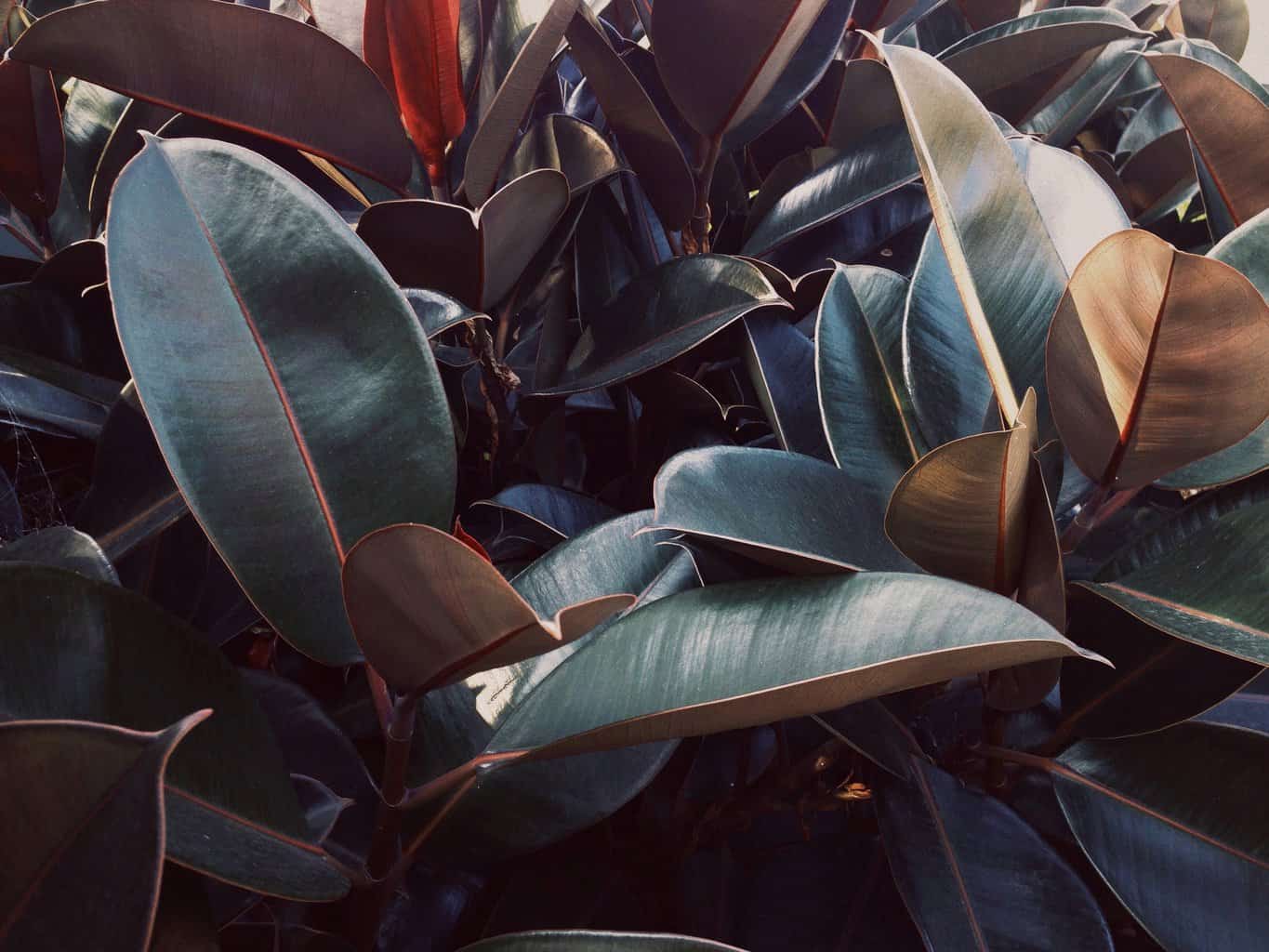
Ficus elastica, also known as the Rubber plant, belongs to the group of banian or banyan. The banian group, however, is an epiphytic member of the fig family. The species is also known under other names, such as rubber tree or Indian rubber bush.
Rubber plants live in Asia, but they have been accommodated in the state of Florida, as well!
You may be wondering how the rubber plant got its name. Well, it produces a sap that was once used to produce rubber.
It grows as a large tree up to 15 meters tall! It has extravagant but solid roots.
The leaves are shiny, oval-shaped, and more prominent in the younger trees. They can be plain green or variegated. There are over 1000 rubber tree species, one of the most beautiful being the burgundy rubber plant.
It has an extraordinary leaf color, reddish leading to black.
The rubber tree is a fast-growing, sizeable indoor plant that will create an exotic mood wherever you place it!
In stock In stock In stock In stock
$12.99
Sold By:
BubbleBlooms
Pilea peperomioides / Chinese money plant / Chinese missionary plant
Only 993 available and it’s in 4 people’s basket Rated 4.81 out of 5 based on 279 customer ratings04
Sold By:
BubbleBlooms
$12.00
Sold By:
Smoot's Farm
Coral Bells Black Forest Cake Heuchera 3″ Tall Pot Live Perennial
Rated 4.89 out of 5 based on 27 customer ratings00
Sold By:
Smoot's Farm
Free Shipping
$9.96 – $11.96
Sold By:
CZ Grain
Sunflower Seeds for Planting – Jumbo Mix Pack – 15+ Varieties – (Helianthus annuus) – Non-GMO Seeds
Only 883 available and it’s in 3 people’s basket Rated 4.60 out of 5 based on 156 customer ratings00
Sold By:
CZ Grain
Free Shipping
$75.99
Sold By:
Cacti and Exotica
Ferocactus emoryi | Fishhook Barrel Cactus | 6″ Pot
Rated 4.98 out of 5 based on 59 customer ratings00
Sold By:
Cacti and Exotica
Pro-Tip
If you buy a rubber tree plant, do it while it is still young – it’ll adapt easier to the new conditions.
They are known as plants that don’t like a lot of change.
Watering Needs
Rubber tree plant care requires moderate watering.
Enhance the watering frequency in the growing period and keep the soil slightly moist.
Still, never let it become waterlogged.

On the other hand, during the winter season, water is only once or twice a month. Ensure the upper soil layer has dried before you water the rubber plant again during colder months.
Pro-Tip
Since tap water is being treated with chlorine and other substances, it isn’t recommended to use it when watering.
Instead, place bottles filled with water outside without the lid. The harmful substances will evaporate.
Of course, the best way would be to collect and use rainwater.
Humidity
In general, rubber tree plants, like usual, increase room humidity levels.
It would help if you occasionally wiped the foliage with a damp cloth. I suggest misting them first and wiping them afterward.
Even though the watering amount should be lowered during the winter, don’t stop misting the plant during this period.
Sunlight Needs of Rubber Plant
Rubber plant light needs aren’t that hard to fulfill.
It thrives in bright, indirect light. A sheer curtain on the window will greatly assist if grown indoors.
You can place rubber plants somewhere semi-shaded, as well.

You haven’t provided enough sunlight if you notice the leaves falling off and the whole plant is leggy.
Another problem that might occur is that the leaves become less shiny.
In stock In stock (can be backordered) In stock
$9.99
Sold By:
Cacti and Exotica
Crassula ovata—Tricolor Jade
Rated 4.98 out of 5 based on 59 customer ratings00
Sold By:
Cacti and Exotica
Free Shipping
$19.99
Sold By:
Gar-Zen Botanical Design
Kalanchoe Gastonis bonnieri Donkey Ear Ships Free.
Only 7 available and it’s in 2 people’s basket Rated 4.86 out of 5 based on 49 customer ratings00
Sold By:
Gar-Zen Botanical Design
$44.99
Sold By:
Succulent Oasis
Medium Succulent Plant – Star Aloe ‘Tarantula’ Hybrid. An extremely rare and very limited Aloe.
Rated 4.84 out of 5 based on 352 customer ratings06
Sold By:
Succulent Oasis
Temperature Needs of Rubber Plant
Rubber trees like a slightly higher room temperature, from 18 to 30 degrees Celsius.
It is intolerant to temperatures lower than 15 degrees Celsius.
Still, rubber plants don’t like change, so try to maintain a constant temperature and humidity level.
Soil Needs
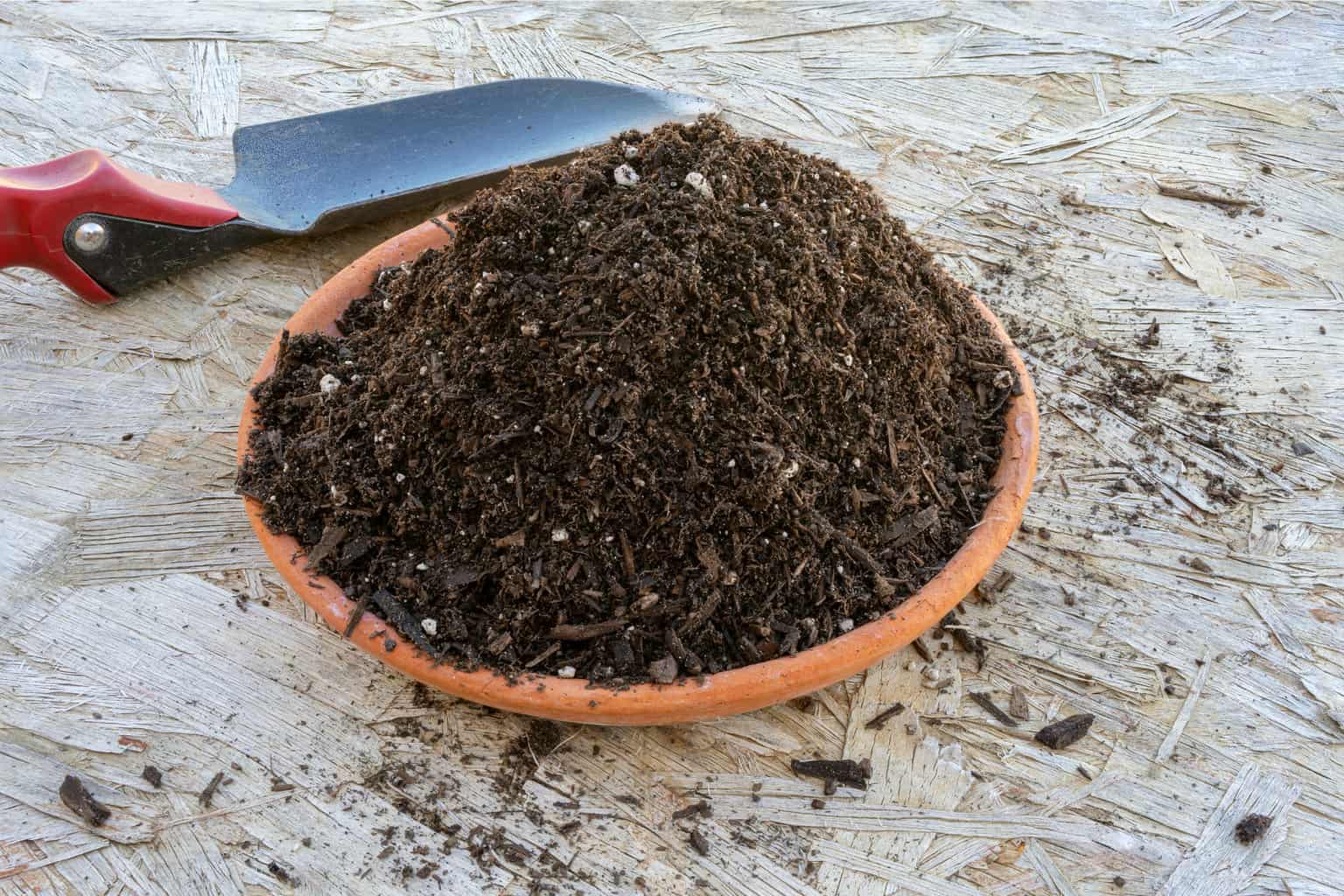
Make a mixture of equal parts of peat, pine bark, and perlite or sand.
This way, you will ensure quality drainage and good airflow – two essential requirements for the rubber plant soil.
Never overwater rubber fig! It doesn’t tolerate soggy soil.
Pro-Tip
The size of the pot decides the size of your rubber plant.
Please place it in a smaller pot to restrict its growth.
Fertilizer
Rubber tree plants want occasional feeding in spring and summer.
Do it once a week or two, and don’t fertilize outside the growing season.
Use a regular fertilizer for houseplants.
Repotting

If you want to enhance the rubber plant growth, repot it.
In any other case, there is no need for repotting.
If you decide to do it, don’t choose an overly large pot. Make it bigger by just a size.
Repot every two to three years to encourage rubber plant growth and development.
In stock In stock In stock In stock
$18.00
Sold By:
Beauties & Beasts
Cactus Succulent- Haworthia maughanii x truncata
Rated 4.83 out of 5 based on 24 customer ratings00
Sold By:
Beauties & Beasts
$15.99
Sold By:
BubbleBlooms
Homalomena Selby, 4 inch, Variegated Queen of Hearts, shield plant
Rated 4.81 out of 5 based on 279 customer ratings00
Sold By:
BubbleBlooms
$20.00
Sold By:
Beauties & Beasts
Carnivorous- Drosera filiformis
Rated 4.83 out of 5 based on 24 customer ratings00
Sold By:
Beauties & Beasts
$19.99
Sold By:
BubbleBlooms
String of Dolphins! Curio x peregrinus / Dolphin necklace, flying dolphins / dolphin plant / Senecio hippogriff / String of Dolphins Plant
Rated 4.81 out of 5 based on 279 customer ratings03
Sold By:
BubbleBlooms
Propagating
If you want to propagate rubber tree plants, the most straightforward way would be to use stem cuttings.
Just cut off a piece previously sterilized using a sharp knife or scissors.
Put the stem in the rooting powder and plant it in a pot.
A heating source beneath the pot will encourage the process.
Types of Rubber Tree Plants
Burgundy Rubber Tree (Ficus elastica ‘Burgundy’)
The burgundy rubber tree has broad, glossy leaves that are a deep red. It requires bright, indirect light and humid conditions.
Tineke Rubber Tree (Ficus elastica ‘Tineke’)
This variety has variegated leaves in cream, red, and green hues that stand out against the dark stems.
Tineke can tolerate lower light but thrives in bright locations.
Ruby Rubber Tree (Ficus elastica ‘Ruby’)
This ruby rubber tree features elegant oval leaves that emerge with red tones and then mature into deep green.
It grows well in most indoor conditions with moderate sunlight and humidity.
The Council Tree ( Ficus Altissima )
The Council Tree has large, thick leaves that are typically a glossy green but can also exhibit lime green and yellow variegation.
The leaves can grow up to 10 inches long and have prominent veining that stands out against the variegated colors.
Doescheri Rubber Tree (Ficus elastica ‘Doescheri’)
This variety has large green leaves with white veins running through them, giving a bold and dramatic appearance.
Doescheri needs lots of space and prefers consistent warm temperatures.
Decora Rubber Tree (Ficus elastica ‘Decora’)
Decora has glossy decorative leaves splashed in white and dark green variegation. It is slower growing but can reach heights of 6-10 feet at maturity.
Common Problems
The rubber tree is pretty healthy and resistant.
The only problems you might have are scale and mealybugs.
In this case, you can use insecticide soap.
If you notice the potting soil constantly wet, the leaves turning yellow and brown, and falling off, overwatering is probably the cause.
Examine the roots and see if they are rotten.
If the rubber plant hasn’t been getting enough water, its leaves will curl inward.
Frequently Asked Questions
Rubber tree plant care can include pruning from time to time.
Don’t prune the healthy leaves, just the damaged ones.
Also, once you cut off the top, know that the rubber tree will no longer grow in height, but branch out!
So, only cut it off when you are sure you don’t want it to grow anymore.
You can do it only if the temperatures in your area don’t go below 15 degrees Celsius.
In general no, it isn’t.
Still, it can cause a mild rash or irritation to the skin.
Always wash your hands after you have been working with the rubber plant and never ingest it.
It can be the cause of mild stomach issues, diarrhea, and vomiting.
You can check online or your local nurseries for different types of rubber tree plant. Or you simply place your order here in Plantly.
Whether you want to buy, sell or simply reach out to other plant enthusiasts, Plantly is the right place to be!
In stock In stock (can be backordered) In stock
$9.99
Sold By:
Cacti and Exotica
Crassula ovata—Tricolor Jade
Rated 4.98 out of 5 based on 59 customer ratings00
Sold By:
Cacti and Exotica
Free Shipping
$19.99
Sold By:
Gar-Zen Botanical Design
Kalanchoe Gastonis bonnieri Donkey Ear Ships Free.
Only 7 available and it’s in 2 people’s basket Rated 4.86 out of 5 based on 49 customer ratings00
Sold By:
Gar-Zen Botanical Design
$44.99
Sold By:
Succulent Oasis
Medium Succulent Plant – Star Aloe ‘Tarantula’ Hybrid. An extremely rare and very limited Aloe.
Rated 4.84 out of 5 based on 352 customer ratings06
Sold By:
Succulent Oasis

